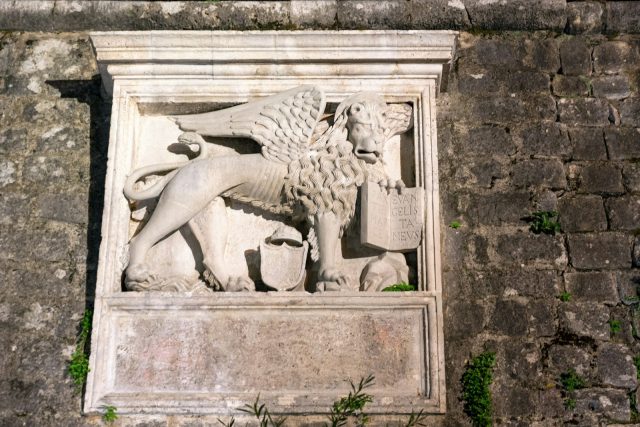Table of Contents
- Contextualizing Apocalyptic Symbolism
- John’s Vision: Literary and Historical Framework
- Anatomy of the Apocalyptic Creature: Numerology and Imagery
- Evolution of Exegesis: From Patristic to Modern Scholarship
- Literal vs. Metaphorical Readings in Contemporary Theology
- Cultural Echoes: The Beast in Art, Literature, and Media
- The Beast’s Symbolism in Modern Crisis Narratives
- Engaging Readers: Questions for Further Reflection
- Connecting Ancient Vision to Today’s Conversations
- Final Reflections on Revelation’s Enduring Menace
Contextualizing Apocalyptic Symbolism
Revelation springs from apocalyptic tradition, a genre focused on cosmic conflict, moral binaries, and striking symbolic creatures. Beasts function less as literal monsters than as concentrated images of authority, corruption, and contested loyalties. The imagery resists a single fixed meaning, inviting interpretation that connects ancient settings to enduring questions about power and allegiance. This treatment centers the beast as a charged symbol rather than a settled historical fact or a fixed future prediction.
John’s Vision: Literary and Historical Framework
John’s vision reflects the literary conventions and situational pressures of early Christian apocalyptic writing. Its imagery addresses communities confronting coercion and competing claims of loyalty. The narrative arranges seals, trumpets, and portents into cycles of disclosure and judgment; the beasts appear within that patterned structure as emblematic figures framed by rhetorical and symbolic intent. Whether the imagery points primarily to first-century actors, later institutions, or future agents depends on one’s interpretive approach; the text itself is crafted to function across contexts.
Anatomy of the Apocalyptic Creature: Numerology and Imagery
The beast’s composite features—seven heads, ten horns, diadems, and the number 666—draw on Old Testament imagery, symbolic numerology, and first-century reading practices such as gematria. Those elements work as communicative devices: they condense critique, signal relationships among powers, and invite readers to discern identities and patterns rather than supplying a single, unquestionable label. The imagery thus operates on multiple levels—literary, symbolic, and rhetorical—rather than as a literal biological description.
Evolution of Exegesis: From Patristic to Modern Scholarship
Readings of the beast have shifted through history according to changing contexts and concerns. Patristic writers often linked the imagery to Roman power; later interpreters applied the symbol to ecclesiastical institutions, monarchies, or ideological systems; modern scholars analyze literary form, historical allusion, and reception history. Contemporary scholarship tends to treat the beast as a polyvalent symbol whose referents can include past, present, or prospective forms of concentrated authority, depending on methodological commitments.
Literal vs. Metaphorical Readings in Contemporary Theology
Interpretive options range across the spectrum. Some readings emphasize concrete, sequential fulfillment in history (identifying specific political figures or future global rulers), while others emphasize typological or symbolic meanings that describe recurring patterns of oppressive power throughout time. Many scholars and pastors adopt hybrid positions that allow the text to speak both to historical situations and to ongoing realities of coercion and idolatry. The book’s intentional ambiguity sustains productive tension between literal and metaphorical readings.
Cultural Echoes: The Beast in Art, Literature, and Media
Artists and writers have repeatedly adapted the beast’s imagery to address their own eras’ anxieties—medieval illuminators, Renaissance printmakers, modern novelists, and filmmakers all repurpose its motifs. The beast appears as corporate emblem, technocratic menace, or political caricature depending on medium and message. These cultural appropriations emphasize the symbol’s flexibility: it provides a ready-made vocabulary for portraying systemic threat without requiring consensus on a single historical identification.
The Beast’s Symbolism in Modern Crisis Narratives
Contemporary discourse borrows the beast’s images to dramatize threats such as invasive technology, environmental collapse, and authoritarian governance. Such uses are rhetorical strategies that exploit the beast’s associative power to mobilize concern or critique. They may function as theological analogies, ethical warnings, or persuasive metaphors—useful for diagnosing patterns of unaccountable power regardless of one’s view about a specific end-time timetable.
Engaging Readers: Questions for Further Reflection
What recurring features of power—secrecy, coercion, idolatry—does the beast help you recognize in past and present institutions? How can the beast’s symbolic language sharpen ethical attention without forcing premature identifications? Which interpretive assumptions shape whether you read the imagery as describing past actors, present systems, or future possibilities?
Connecting Ancient Vision to Today’s Conversations
Imagery from John’s vision continues to inform conversation because it names dynamics—compulsion, allegiance, false claimants—that reappear in diverse historical moments. The beast of revelation functions as a durable metaphor for structures that demand loyalty or exercise coercive control. Acknowledging its symbolic density helps readers use the motif responsibly: as a diagnostic tool for power and a prompt to ethical reflection rather than as a simple code for a single, definitive identification.
Final Reflections on Revelation’s Enduring Menace
The beast’s lasting significance lies in its capacity to represent concentrated, corrupting power in ways that speak across times and cultures. Its imagery warns about the dynamics of authority and the costs of coerced allegiance without forcing a single historical or future assignment. Read as symbol, typological pattern, or (for some) prophetic indicator, the beast continues to provoke reflection about how communities resist domination and maintain fidelity in shifting circumstances.
